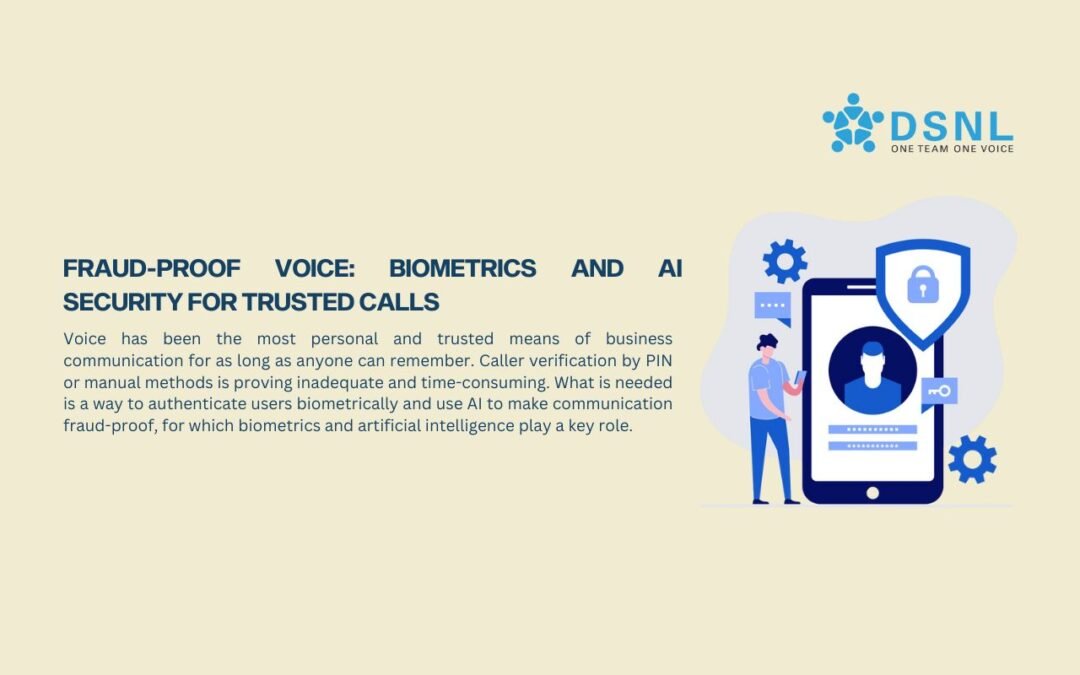Voice has been the most personal and trusted means of business communication for as long as anyone can remember. Caller verification by PIN or manual methods is proving inadequate and time-consuming. What is needed is a way to authenticate users biometrically and use AI to make communication fraud-proof, for which biometrics and artificial intelligence play a key role.
The Problem With Fraud Calls
Call fraudsters have become increasingly sophisticated at exploiting the gaps and vulnerabilities in telephony platforms. Some of their strategies include vishing, number spoofing, and social engineering, all of which put businesses and customers at risk.
While most systems do have some security layers, such as PINs or answers to secret questions, these are easily bypassed with social engineering, or in the case of known customers.
Voice Biometrics: A More Reliable Password
Voice is one of the most identifiable and personal things about a human being, and it has all the features needed to create a biometric signature. A human voice has a unique combination of tone, pitch, rhythm, and physical features that is extremely difficult to steal or copy.
Biometrics can now be applied to caller authentication in a way that is completely passive. It can recognize the unique traits in the caller’s voice and verify the match with the stored voiceprint while the call is taking place.
AI-Driven Security
Artificial intelligence has been gaining ground as a way to make calls more secure. It can be used to run advanced analytics on the conversation and other parameters and listen for subtle indicators of a fraudulent call. An AI engine can flag or reject a call that attempts to impersonate a known customer and has some deviation in intonation, pace, or background noise. When used in tandem with voice biometrics, AI provides a strong additional layer of fraud protection.
Multi-Layered Defense for Enterprise Calls
No single technique can protect enterprise calls against the vast and growing volume of scams and fraud. A fraud-proof system needs to have multiple layers of defense working together. While voice biometrics creates a unique profile of an authenticated user, AI helps monitor the voiceprint and score the call based on several parameters. Secure transmission encryption is another measure to protect the confidentiality of the data that is shared during the call.
The Future of Trusted Voice Calls
Fraudsters are evolving their methods and tools at an alarming pace. Future scams will most likely include more advanced deepfake voice cloning and fraudster repertoires. This will need even more advanced tools and countermeasures to detect and prevent fraud. Voice biometrics in the future will also need to include liveness detection and other features to guard against synthetic or cloned voices.
Conclusion
Call fraudsters are using more and more sophisticated means to impersonate, spoof, and scam both businesses and customers. Securing voice communication against these fraudsters requires a more accurate, adaptive, and resilient set of solutions than most conventional defenses provide. Join DSNL and fraud-proof your calls today.

